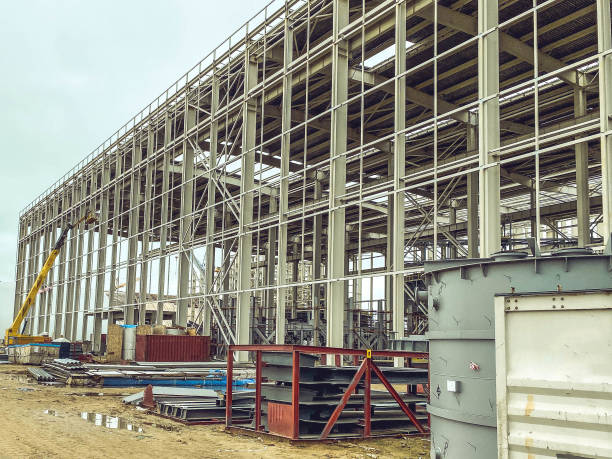When it comes to construction, modern property owners are always searching for structures that balance durability, cost-efficiency, and versatility. This is where metal buildings come into play. Known for their strength and adaptability, they are rapidly becoming the preferred choice for commercial, residential, and agricultural needs. Unlike traditional construction, these buildings offer faster assembly, lower maintenance, and customizable designs that stand the test of time. In this article, we’ll uncover the reasons behind their popularity, explore their real-world applications, and highlight how they can add long-term value to your projects.
Why Metal Buildings Are a Popular Choice
Metal buildings are increasingly favored due to their ability to provide lasting solutions at competitive prices. Unlike wood or concrete structures, steel is resistant to issues like rot, termites, and mold, which makes maintenance far easier. Additionally, these buildings can withstand extreme weather conditions such as heavy snow, strong winds, and seismic activity, offering peace of mind to property owners. With advancements in engineering and design, modern metal structures are also more visually appealing, allowing owners to choose sleek finishes, functional layouts, and even energy-efficient enhancements.
Cost-Efficiency and Long-Term Savings
One of the main reasons builders choose metal buildings is their cost advantage. Steel structures often require fewer materials overall, which reduces initial costs. Prefabricated parts make construction faster, cutting down on labor expenses. Furthermore, the energy-efficient features of steel—like reflective roofing panels—help lower utility bills. Over time, reduced repair and maintenance needs mean property owners spend significantly less compared to those who own traditional wood or brick structures. For businesses, this means higher profitability; for homeowners, it means more savings for other investments.
Versatility of Applications
Metal buildings are incredibly versatile, serving industries ranging from agriculture to retail. Farmers often use them for barns, storage, or equipment shelters because of their durability. Businesses choose steel warehouses and workshops for their spacious, column-free interiors. In the residential sector, metal homes are gaining popularity because they blend modern aesthetics with practical benefits like energy efficiency and low upkeep. Educational institutions, sports facilities, and even community centers are now opting for steel designs due to their scalability and strength.
Environmental Benefits of Steel Construction
Sustainability is another driving factor behind the rise of metal buildings. Steel is 100% recyclable, making it one of the most eco-friendly materials available. Many manufacturers use recycled steel in their production processes, reducing the demand for natural resources. Additionally, energy-efficient insulation and roofing options can significantly reduce energy consumption, helping organizations and homeowners cut their carbon footprint. For those who value green construction, metal buildings offer an ideal balance of performance and responsibility.
Innovation with Hybrid Steel Buildings
As construction evolves, innovations like Hybrid steel buildings are redefining what’s possible. These combine the best of traditional building methods with the strength and adaptability of steel. For example, hybrid models can integrate steel framing with concrete or wood elements to achieve unique architectural designs. This flexibility means property owners don’t have to compromise on aesthetics to enjoy the benefits of steel. Hybrid options also allow for taller ceilings, wider spans, and creative layouts, making them a favorite for commercial developers and architects.
Real-World Example of Success
Consider the case of a logistics company that transitioned from a traditional warehouse to a modern steel building. The construction timeline was cut by nearly 40%, and the company saw a 25% reduction in operating costs due to better insulation and reduced maintenance. This example illustrates how businesses can achieve both financial and operational efficiency by choosing steel over conventional materials. Similar stories are found in agriculture, education, and housing sectors, proving the widespread benefits of this construction choice.
Conclusion
Metal buildings are no longer seen as plain, industrial structures. They have transformed into efficient, versatile, and sustainable solutions for modern construction needs. From cost savings and durability to eco-friendly design and architectural flexibility, they continue to outperform traditional options. Whether you’re planning a new warehouse, an agricultural facility, or even a modern home, exploring the benefits of steel can help you make a smart, future-ready investment. As the demand for durable and sustainable construction grows, it’s clear that metal buildings will remain a leading choice for years to come.





Comments